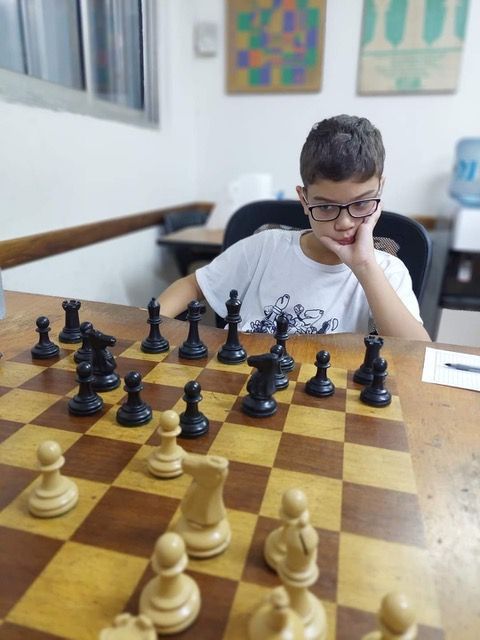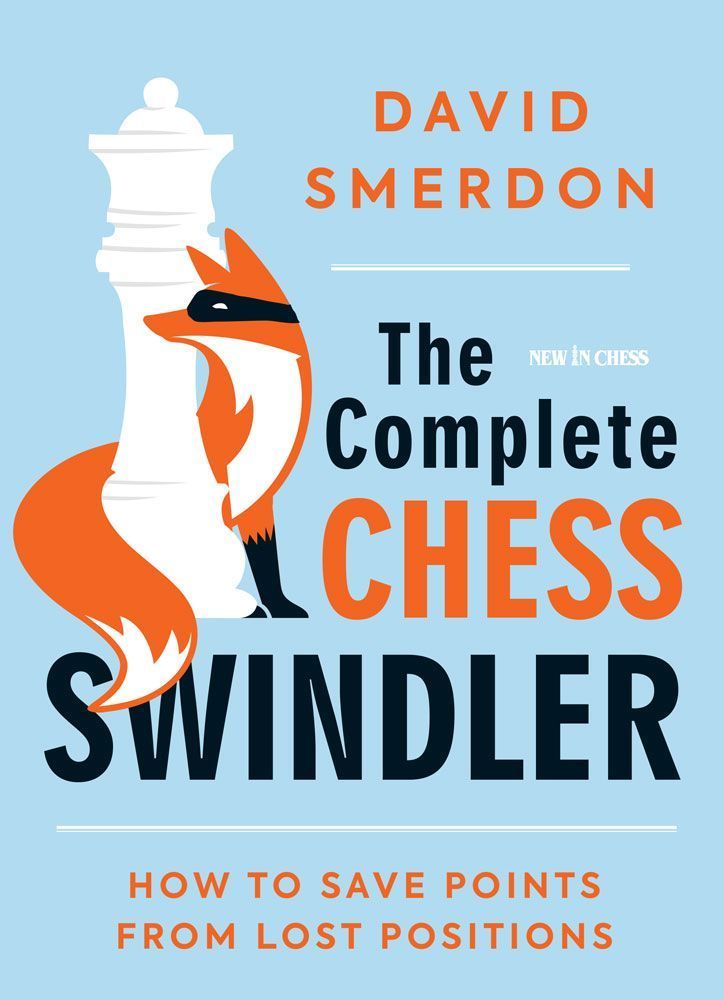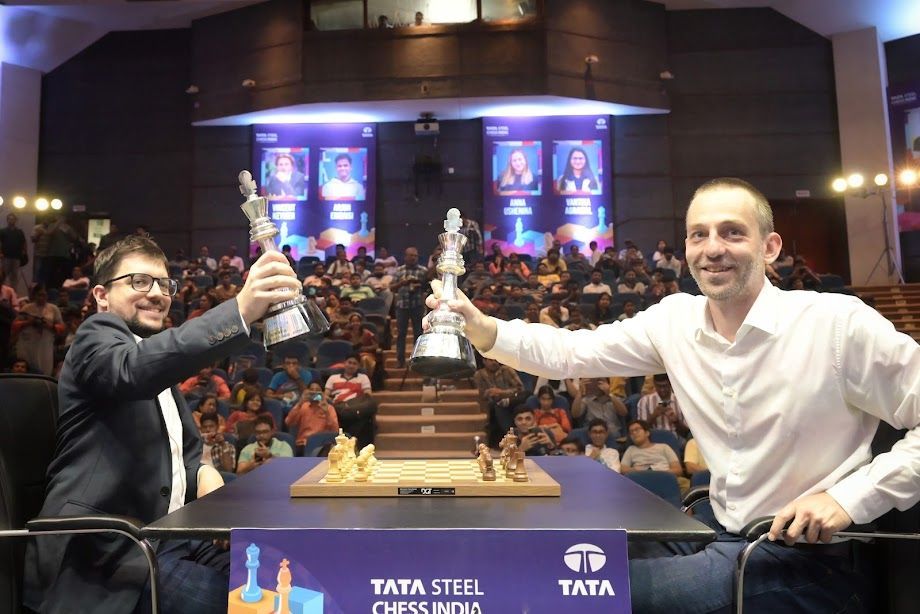Ding’ed
A little bit of chess history was made earlier on Thursday afternoon at the FIDE World Cup in Tbilisi, Georgia, as the underdog, Ding Liren, of China, rose to the challenge by dramatically beating US champion Wesley So, 3.5-2.5, after their semifinal match-up went to a tiebreak-decider. And in doing so, China’s #1 now not only made it into the four-game final of the brutal, 128-player knockout event but in the process, he’s now become the first Chinese player ever to play in the Candidates tournament.
Ding, 24, had a roller-coaster with So, as both players equally squandered golden chances to win in the classical two-game mini-match. In game 1, So overlooked a critical exchange sacrifice that looked to be winning, and ended up seeing his ever-resourceful opponent escaping by cleverly forcing a perpetual check. And in game 2, it was So’s turn to do all the escaping, as he was under extreme pressure throughout and looked likely to lose, only for his opponent to fail to find the winning continuation only to have to cede the inevitable draw in the end.
And with the match tied at 1-1 and having to go into overtime of a tiebreak decider, both players weren’t giving anything away as they drew their first two rapid tiebreak games – but the deadlock was dramatically broken in the third rapid game, as Ding outplayed So to win, thus leaving the US champion facing a must-win scenario in the next game or else head to the exit, which his opponent easily held the draw to win the match.
Meanwhile all the action and sportsmanship was taking place in a truly gripping contest in the second semifinal tiebreak match-up between Lev Aronian, of Armenia, and Maxime Vachier-Lagrave, of France, who right now are the two big in-form players in the game today, who have shared the spoils of elite tournament victories this year that has clearly frustrated World champion Magnus Carlsen.
Nothing could separate these two in a match that went to the wire and proved to be one of the classic World Cup match-ups of all time. After drawing both their classical games, MVL was the first to strike by winning the opening tiebreak game, and looked certain to win the match – but just as dramatically, facing a must-win scenario, Aronian turned in a swashbuckling gem-of-a-game to once again tie the topsy-turvy match.
And after two more tense draws in the rapid, the match then moved into the blitz stage where both players again proved equally resourceful in the art of saving lost positions, as the match was tied at 4-4. This left the final Armageddon game that would ultimately decide everything, which saw Aronian emerge as the winner – and fittingly for these two combatants who are friends off the board, there came a warm handshake and congratulations from MVL as he wished Aronian good luck in the final.
The two losers, So and MVL, now depart Tbilisi winning $50,000 each. And that now leaves Aronian and Ding – who have now clinched their tickets for the Berlin Candidates’ next March – to do battle in the four-game World Cup final for the $120,000 first prize that will start on Saturday.
GM Levon Aronian – GM Maxime Vachier-Lagrave
FIDE World Cup, semifinal, (4)
King’s Indian/Benoni Defenc
e1.d4 Nf6 2.c4 g6 3.f Aronian got nowhere in the two-game classical mini-match against MVL’s legendary preparation in the Grünfeld. So instead, in a must-win scenario in the tiebreaks, the Armenian plays a very popular Anti-Grünfeld system that tends to transpose into a King’s Indian/Benoni set-up. 3…c5 4.d5 d6 5.Nc3 e6 6.e4 Bg7 7.Nge2 0-0 8.Ng3 a6 9.a4 h5 The idea is to push …h4 and harass the White knight on g3 before the Bf1 has moved – but Aronian has a cunning plan awaiting MVL from the Armenian’s legendary home preparation. 10.Bg5 Qc7 11.Qd2 exd5 12.cxd5 Nh7 13.Bh6 h4 14.Bxg7 Kxg7 15.Bc4!? This had to have come as a bolt from the blue for MVL, as he had hoped he was going to harass the knight to e2 and disrupt the development of the Bf1 – but now with the shock piece sacrifice, Aronian is taking him down the deep rabbit-hole of his home prep. 15…hxg3 16.hxg3 Rh8 17.e5! Qe7 Taking the pawn loses quickly, as it allows the Bc4 to play a vital role in the attack: 17…dxe5 18.d6 Qd7 19.Qh6+ Kg8 20.Qxg6+! Kf8 21.Qh6+ Ke8 (No better is 21…Kg8 22.Nd5! and the double threat of Ne7+ or Nf6+ can’t be met without a heavy loss of material.) 22.Qf6 and Black can resign here. 18.0-0-0 Nd7? With Black so far behind in development here, it comes as no surprise that MVL was wary of this so attempts to develop some of his pieces – but perhaps the more crucial line is 18…b5!? 19.exd6 Qxd6 20.Ne4 Qd8 21.Qc3+ f6 22.Qe3 g5! (The only move, as taking the bishop is just too dangerous: 22…bxc4? 23.Qh6+ Kf7 24.Qxh7+!! Rxh7 25.Rxh7+ Ke8 26.Re1 and White has a big winning attack.) 23.Bd3 and this still remains a very difficult and double-edged position for Black to have to defend. The cold, unbeating heart of the silicon playing engine will tell you that Black is holding this and has a slight advantage – but a human will see nothing but huge problems and great difficulty defending this. And also taboo is 18…Qxe5? as it quickly loses to 19.Rde1 Qg5 20.Rxh7+! 19.exd6! The knight coming into the attack with tempo makes more problems for MVL defending this position. 19…Qxd6 20.Ne4 Qe5 It looks a very awkward move to make, but perhaps Black needs to retreat with 20…Qf8 to try to survive this? 21.d6! Bringing the Bc4 into the fray; and with it, leaving hanging in the air the major threat of Qh6+ and Qxg6+. 21…g5? A critical error at a critical stage of the game that ultimately proves decisive. Black had to hunker down to try to defend this with 21…Ndf8!? which at least double-protects the knight on h7, protects g6 (thus stopping the threat of Qh6+ and Qxg6+), and intending to unravel with …Be6. And unless White wants to press the ‘gamble button’ here by trying to press further in this difficult position for Black to have to defend, then now is the moment to bail out for a draw with 22.d7! Bxd7 23.Qh6+ Kg8 24.Rxd7! Nxd7 25.Qxg6+ Qg7 26.Bxf7+ Kf8 27.Qd6+ Kxf7 28.Qxd7+ Kg8 29.Qe6+ Qf7 30.Qg4+ Qg7 (It’s just too darn dangerous to run from the repetition with 30…Kf8?! as White has 31.Nxc5! and a very dangerous attack with Black’s king left stranded in no man’s land.) 31.Qe6+ Qf7 32.Qg4+ Qg7 33.Qe6+ etc. 22.Rhe1! (see diagram) The sudden shift of focus to hitting the Black queen comes as a blow to MVL, as he begins to perhaps realize he could well be losing now. 22…b5 23.Bd5 Rb8 24.f4 Qd4? This loses outright. MVL’s only hope of trying to stay in the game was with 24…Qf5! 25.Qc3+ Ndf6 26.d7! b4 (If 26…Bxd7? Black just goes further down the rabbit-hole after 27.Nd6 Qg4 28.Re7 winning.) 27.dxc8Q Rbxc8 28.Qc4 Nxe4 29.Rxe4 but Black is left still defending a very difficult position – certainly White will be the one having all the fun here. 25.Qe2 Qb4 26.Qh5 1-0 MVL resigns, as the hit on f7 cannot be met without either the loss of material, as …Rf8 allows a mating attack after Rh31.










Copyright © 2024. First Move Chess. All Rights Reserved. Deigned and Hosted by JLT Web Design & Digital Marketing. Our Privacy Policy.


